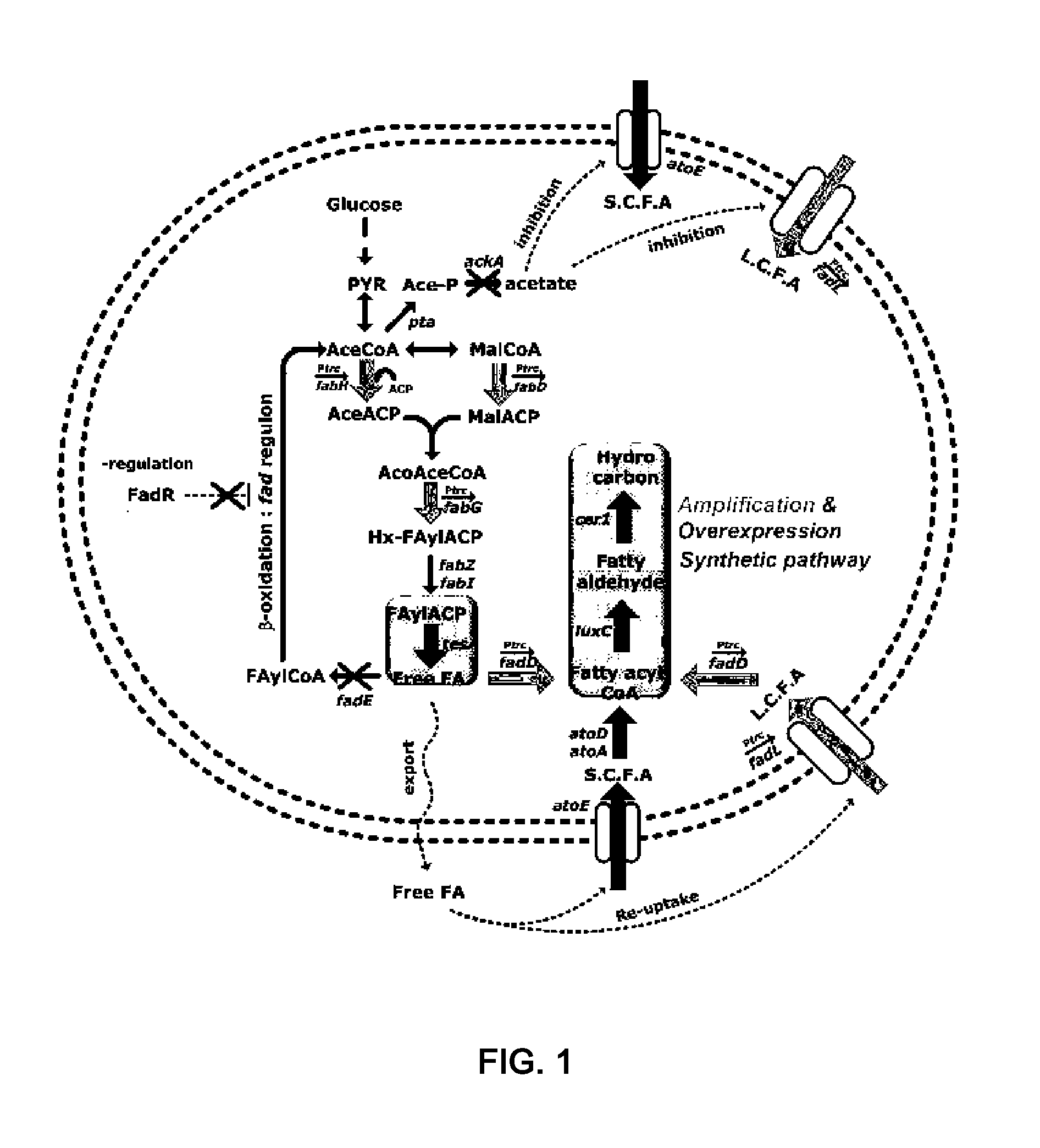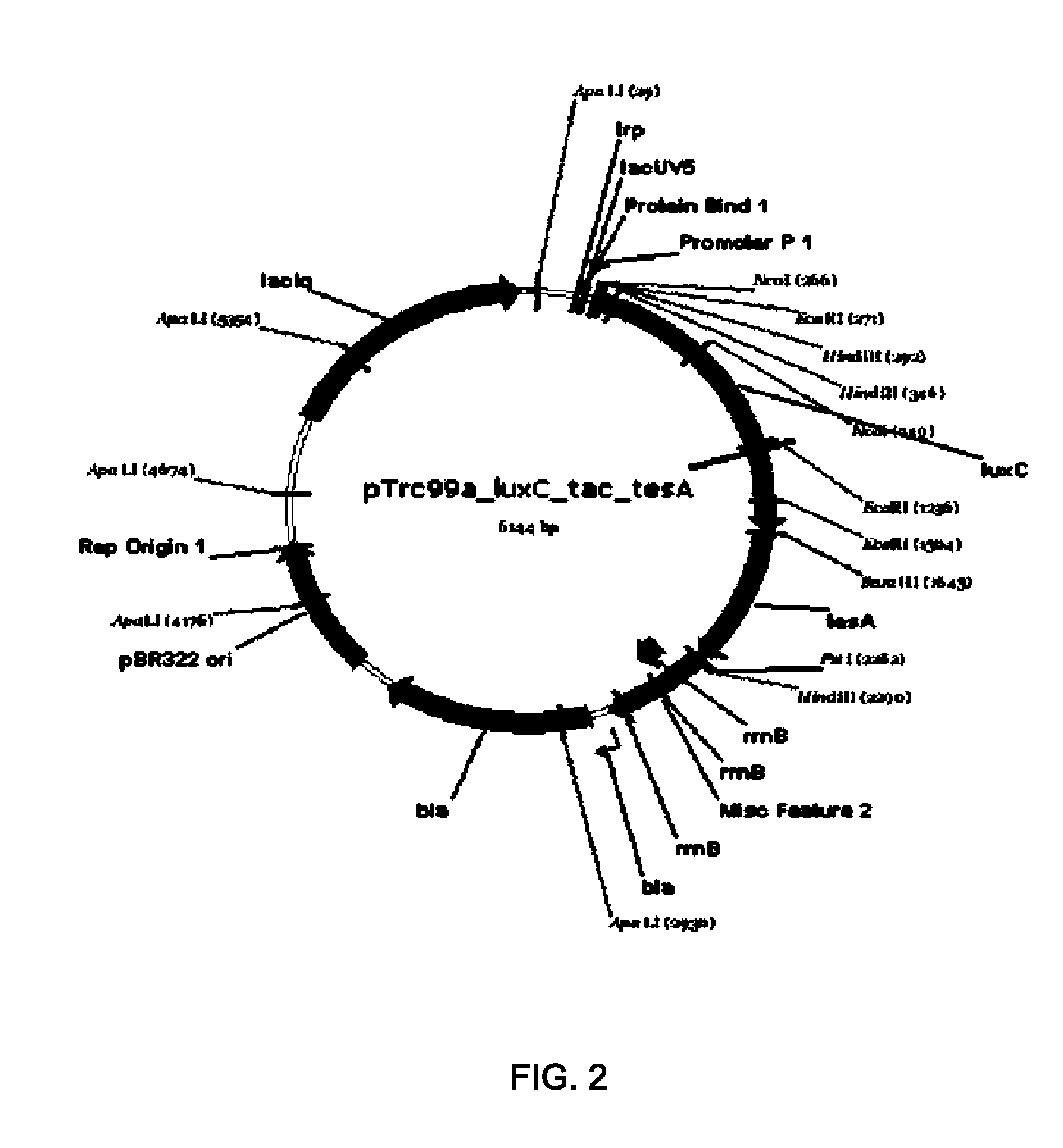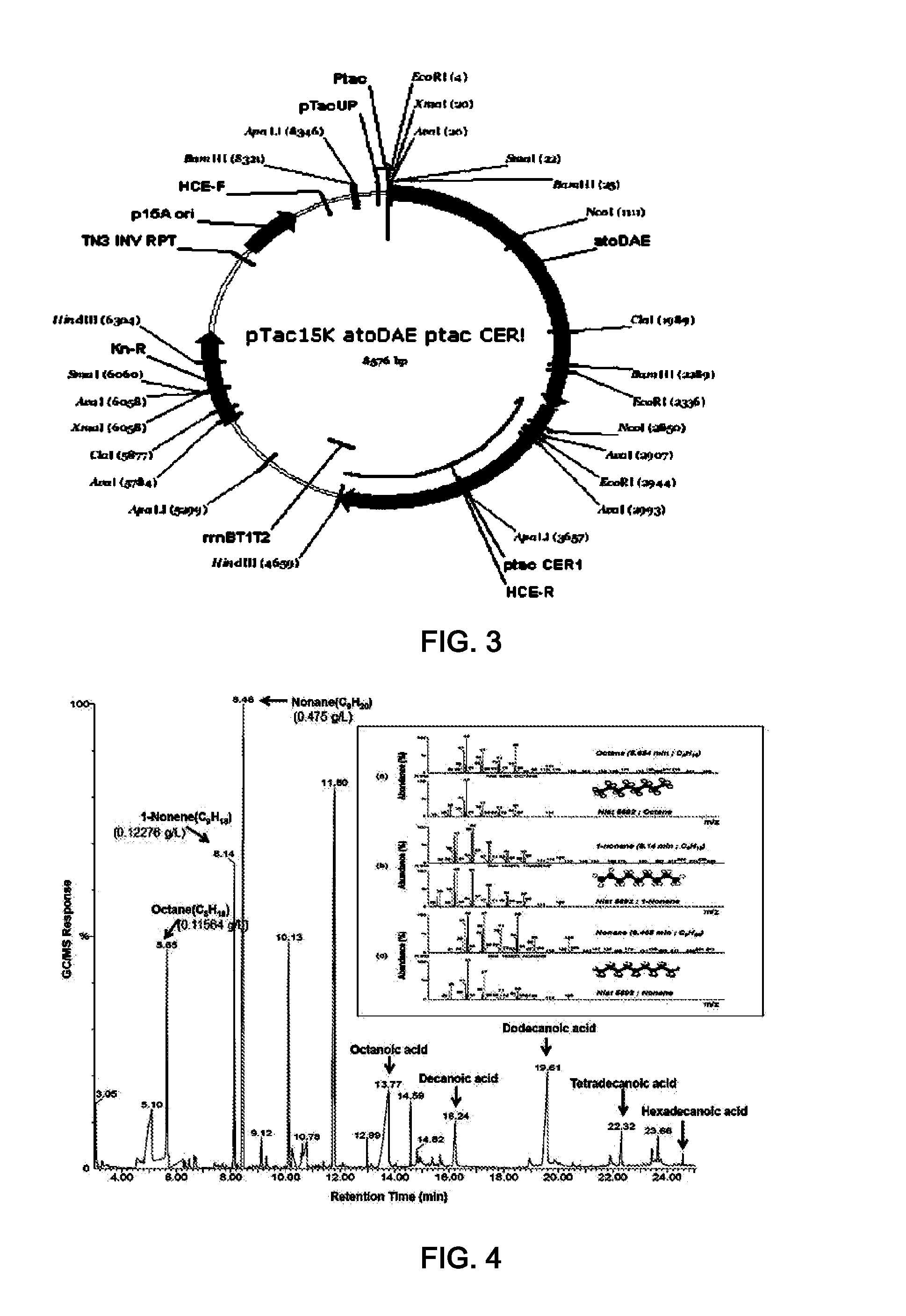Microorganism variants having hydrocarbon producing ability and method for producing hydrocarbon using the same
a technology of hydrocarbon and microorganisms, applied in the field of microorganism variants, can solve the problems of affecting the production efficiency of biofuels
- Summary
- Abstract
- Description
- Claims
- Application Information
AI Technical Summary
Benefits of technology
Problems solved by technology
Method used
Image
Examples
example 1
[0048]1-1: Deletion of fadE Gene (Construction of WE3110)
[0049]In E. coli W3110 (ATTC 39936), the deletion of fadE (acyl coenzyme A dehydrogenase) gene and the removal of antibiotic resistance from E. coli W3110 (ATTC 39936) were performed using primers of SEQ ID NOs: 1 and 2 by a one-step inactivation method (Warner et al., PNAS, 97(12):6640-6645, 2000).
[SEQ ID NO: 1]WfadE k / o F:5′-atgatgattttgagtattctcgctacggttgtcctgctcggcgcgttgttgtgtaggctggagctgcttc -3′][SEQ ID NO: 2]WfadE k / o R:5′-actgggcataagccgagaactccagcccgccgtactcttttttgatgatccatatgaatatcctccttag -3′
[0050]1-2: Deletion of fadR Gene (Construction of WER3110)
[0051]In E. coli WE3110 constructed in Example 1-1, the deletion of fadR (DNA-binding transcriptional dual regulator) gene and the removal of antibiotic resistance were performed using primers of SEQ ID NOs: 3 and 4 by a one-step inactivation method (Warner et al., PNAS, 97(12):6640-6645, 2000).
[SEQ ID NO: 3]WfadR k / o F:5′-atggtcattaaggcgcaaagcccggcgggtttcgcggaagagtacattat...
example 2
[0066]2-1: Construction of pTrc99a_luxC Vector
[0067]PCR was performed using the chromosomal DNA of a Clostridium kluyberi strain (DSMZ, no.552, German) as a template and the primers of SEQ ID NOs: 15 and 16, thereby constructing a luxC gene fragment encoding fatty acyl CoA reductase.
[SEQ ID NO: 15]cklluxC F:5′-TATAGGTACCATGATAGATTGTTATTCATTGGATG-3′[SEQ ID NO: 16]cklluxC R:5′-TATTGGATCCTTAAATATTTAGACTACACCACGTT-3′
[0068]Then, the constructed luxC fragment was digested with restriction enzymes (KpnI and BamHI), and a pTrc99a plasmid (Phamacia, Biotech, Uppsala, Sweden) that performs the strong gene expression of a trc promoter was digested with the same restriction enzymes. The digested luxC fragment and plasmid were ligated with each other by T4 DNA ligase, thereby constructing the recombinant plasmid pTrc99a_luxC having a high copy number.
[0069]2-2: Construction of pTrc99a_luxC_tac_tesA vector
[0070]PCR was performed using the chromosomal DNA of a wild-type E.coli (Escherichia coli W3...
example 3
Measurement of the Ability of Mutant Organism to Produce Alkane
[0075]The pTrc99a_luxC_tac_tesA and pTac15k_atoDAE_tac_CER1 plasmids constructed in Examples 2-2 and 2-3 were introduced into WERAPDLBA3110 constructed in Example 1-7 so as to suitable for the production of alkane, and E. coli W3110 (ATCC 39936) was used as a control strain. Mutant microorganisms having the ability to produce alkane were selected on LB plate media containing 50 μg / Ml of ampicillin and 30 μg / Ml of kanamycin. The transformed strain was inoculated into 10 Ml of LB medium and pre-cultured at 37° C. for 12 hours. Then, 5 g / L of glucose was added to a 250 Ml flask containing 100 Ml of LB (sterilized at 80° C. or higher), and 1 Ml of the pre-culture broth was inoculated into the flask and cultured at 31° C. for 10 hours. Next, a 5.0-liter fermenter (LiFlus GX, Biotron Inc., Korea) containing 2.0 liter of medium (containing, per liter of distilled water, 20 g glucose, 13.5 g KH2PO4, 4.0 g (NH4)2HPO4, 1.7 g citri...
PUM
| Property | Measurement | Unit |
|---|---|---|
| octane number | aaaaa | aaaaa |
| octane number | aaaaa | aaaaa |
| octane number | aaaaa | aaaaa |
Abstract
Description
Claims
Application Information
 Login to View More
Login to View More - R&D
- Intellectual Property
- Life Sciences
- Materials
- Tech Scout
- Unparalleled Data Quality
- Higher Quality Content
- 60% Fewer Hallucinations
Browse by: Latest US Patents, China's latest patents, Technical Efficacy Thesaurus, Application Domain, Technology Topic, Popular Technical Reports.
© 2025 PatSnap. All rights reserved.Legal|Privacy policy|Modern Slavery Act Transparency Statement|Sitemap|About US| Contact US: help@patsnap.com



